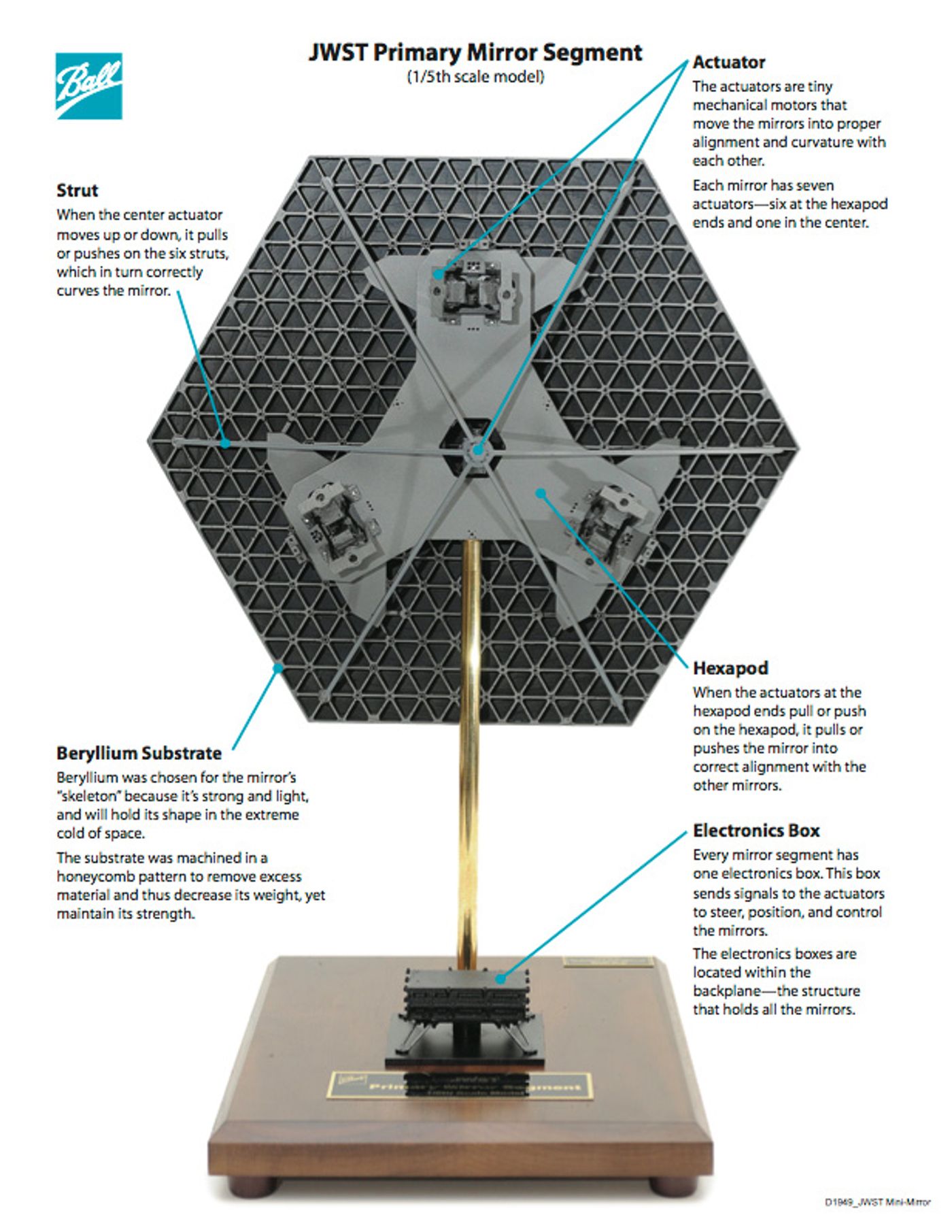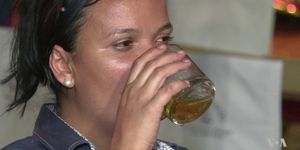NASA Tests the James Webb Space Telescope's Primary Mirror Alignment System
The James Webb Space Telescope will be the most powerful space telescope ever built, and it will succeed NASA’s Hubble Space Telescope by 2018. Powering this massive observation machine is a huge 6.5-meter diameter primary mirror, which dwarfs Hubble’s puny 2.4-meter diameter primary mirror in comparison.
Image Credit: NASA/Mike McClare
Making a primary mirror of this scale possible meant using the divide and conquer technique. It’s comprised of 18 separate hexagonal segments, but each of these individual pieces needs to be aligned for the primary mirror to form one massive dish and operate correctly in space.
The incomplete James Webb Space Telescope body continues to undergo cryogenic testing inside of NASA’s Chamber A at Johnson Space Center, but inside of this chamber, the primary mirror pieces will also undergo an alignment testing process.
In a statement issued by the NASA this week, the space agency discusses just how this process occurs inside the chamber.
Related: The James Webb Space Telescope could help us study the Proxima b system in higher detail
The James Webb Space Telescope’s primary mirror is nothing more than a glorified mirror of tremendous size, so NASA can summon the help of light ray reflections to align the segments correctly.
They use a multi-wavelength interferometer for this process, which generates two separate rays of light that shine down on the James Webb Space Telescope’s primary mirror. One beam works as a reference point, while the other beam scatters out and reflects off the individual primary mirror segments.
From here, the challenge is getting all those separate beams of light to meet up with one another near the reference beam at the center. Fortunately, James Webb Space Telescope comes equipped with seven actuators behind the primary mirror segments that can move them into the proper position.
Image Credit: Ball Aerospace via NASA
Impressively, these actuators are so precise that they can move the mirrors into position in steps as small as a fraction of a wavelength of light; about 1/10,000th the diameter of a human hair.
Once everything is aligned, NASA will use a tool called the AOS Source Plate Assembly (ASPA) to make sure all the optics work correctly. It’s an intricate piece of hardware mounted on the James Webb Space Telescope’s Aft Optics Subsystem that shines laser light up and down the optics system. In this test, NASA ensures that the aligned primary mirror is calibrated to the rest of the space telescope’s optics.
Related: The James Webb Space Telescope experiences a technical mishap during testing
Worthy of note, all of this is a test to make sure that the actuators can move the primary mirror segments into their proper positions. It also ensures that they can operate in a space-like environment, which is why the test takes place inside of Chamber A.
The James Webb Space Telescope will be folded up to fly to space via a rocket, so all the primary mirror segments will become misaligned again. Once in space, NASA engineers will align the primary mirror segments all over again by using the light from a nearby star as the reference beam.
Once satisfied with their alignment, they’ll make some final fine adjustments before calling the James Webb Space Telescope “ready” for scientific exploration.
Because so much money and work went into making the James Webb Space Telescope a reality, it’s important to ensure everything works properly before launching it into space. It’s much easier to repair issues on the ground than it would be to service the unit in space, so slow and steady wins the race.
Source: NASA










